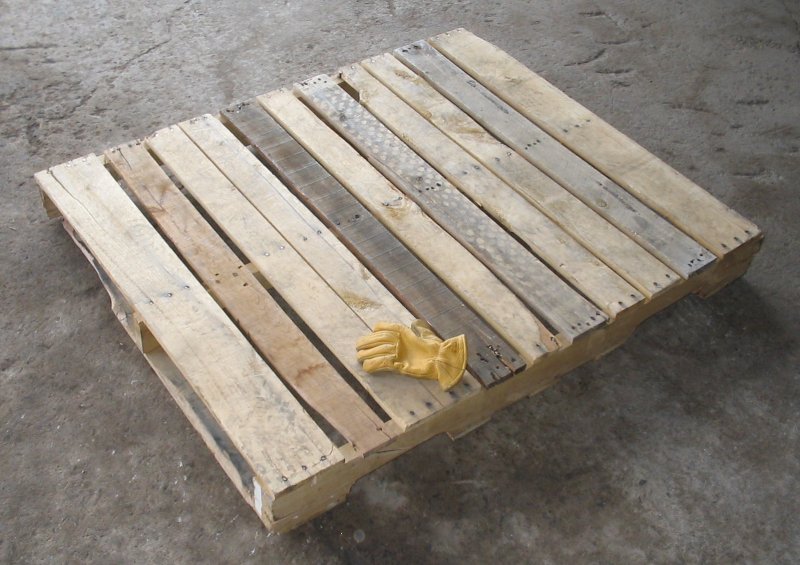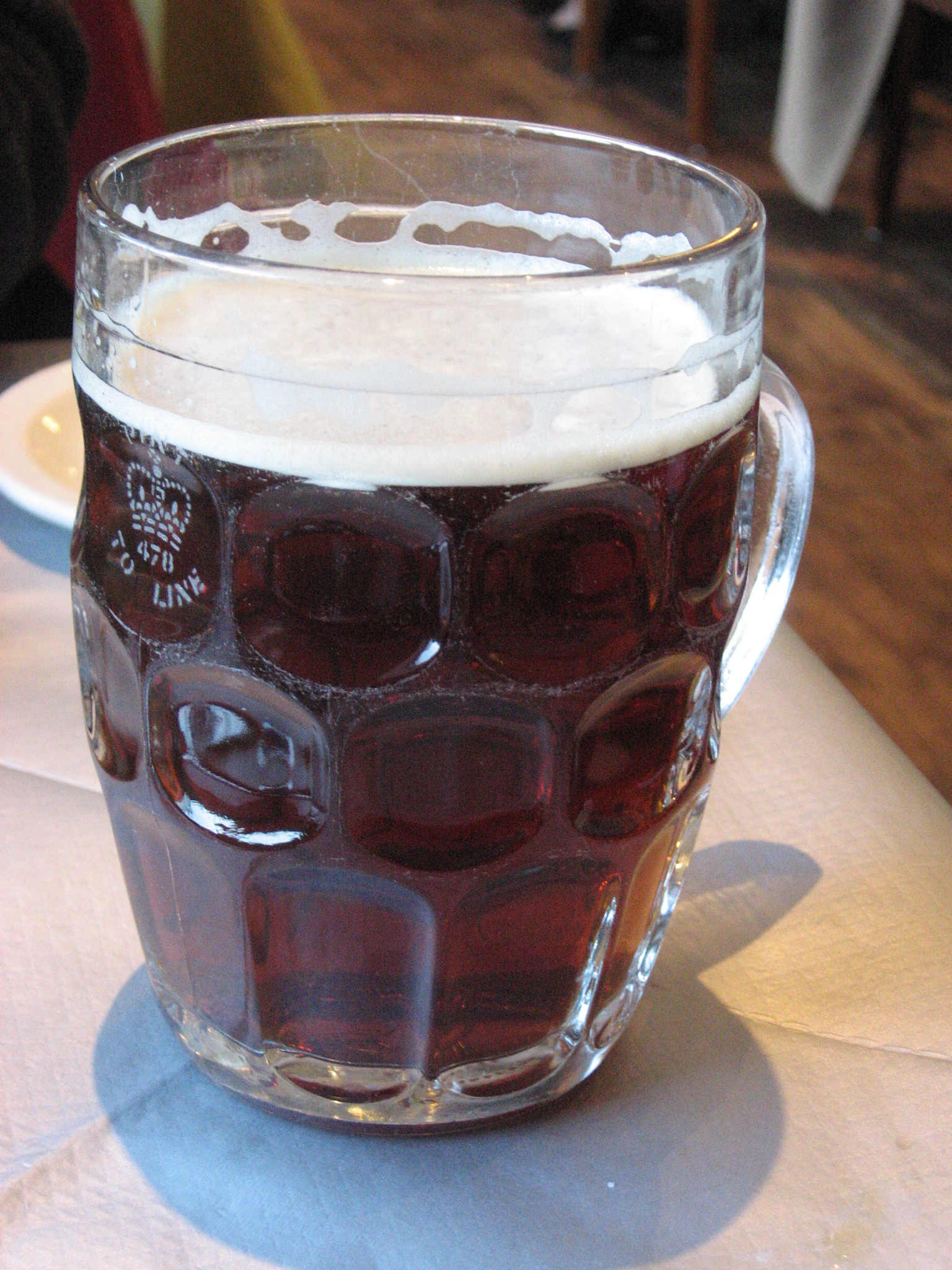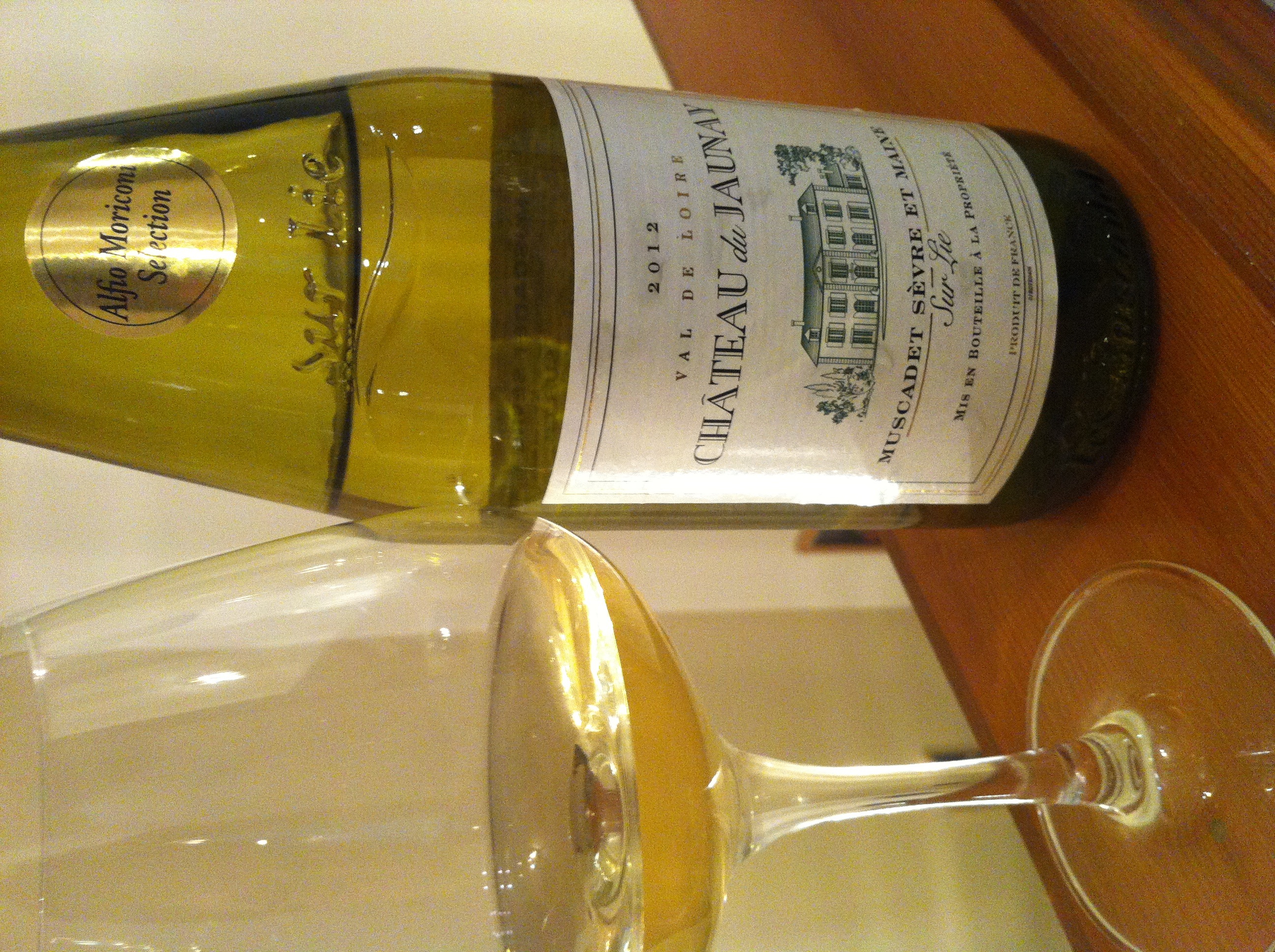|
Stillage
A stillage is like a pallet or skid, but with a cage or sides, or some form of support specifically tailored to the material it is intended to carry. Some are designed to be stackable. Stillages are mainly used to transport goods, raise products off the ground, and can help to separate goods in transit without the need to load and unload the product being carried, which saves time and decreases the chance of damage. An example is the use of stillages in glass manufacturing, where they are shaped like an upright "A"; the plate glass leans inward and is strapped to the stillage ready for transport. Stillages are usually manufactured using steel, and are a popular storage and logistic solution in the following fields: engineering, automotive, warehousing, and logistics. For return logistics, demounted stillages, or "post pallets" as they are also often referred to, help to occupy minimal vehicle space, helping to reduce transportation costs. Beverage and alcohol field A stillage ... [...More Info...] [...Related Items...] OR: [Wikipedia] [Google] [Baidu] |
Pallet
A pallet (also called a skid) is a flat transport structure, which supports goods in a stable fashion while being lifted by a forklift, a pallet jack, a front loader, a jacking device, or an erect crane. A pallet is the structural foundation of a unit load, which allows handling and storage efficiencies. Goods in shipping containers are often placed on a pallet secured with strapping, stretch wrap or shrink wrap and shipped. Since its invention in the twentieth century, its use has dramatically supplanted older forms of crating like the wooden box and the wooden barrel, as it works well with modern packaging like corrugated boxes and intermodal containers commonly used for bulk shipping. In addition, pallet collars can be used to support and protect items shipped and stored on pallets. While most pallets are wooden, pallets can also be made of plastic, metal, paper, and recycled materials. Overview Containerization for transport has spurred the use of pallets because sh ... [...More Info...] [...Related Items...] OR: [Wikipedia] [Google] [Baidu] |
Plate Glass
Plate glass, flat glass or sheet glass is a type of glass, initially produced in plane form, commonly used for windows, glass doors, transparent walls, and windscreens. For modern architectural and automotive applications, the flat glass is sometimes bent after production of the plane sheet. Flat glass stands in contrast to ''container glass'' (used for bottles, jars, cups) and '' glass fibre'' (used for thermal insulation, in fibreglass composites, and for optical communication). Flat glass has a higher magnesium oxide and sodium oxide content than container glass, and a lower silica, calcium oxide, and aluminium oxide content."High temperature glass melt property database for process modeling"; Eds.: Thomas P. Seward III and Terese Vascott; The American Ceramic Society, Westerville, Ohio, 2005, From the lower soluble oxide content comes the better chemical durability of container glass against water, which is required especially for storage of beverages and food. Most f ... [...More Info...] [...Related Items...] OR: [Wikipedia] [Google] [Baidu] |
Steel
Steel is an alloy made up of iron with added carbon to improve its strength and fracture resistance compared to other forms of iron. Many other elements may be present or added. Stainless steels that are corrosion- and oxidation-resistant typically need an additional 11% chromium. Because of its high tensile strength and low cost, steel is used in buildings, infrastructure, tools, ships, trains, cars, machines, electrical appliances, weapons, and rockets. Iron is the base metal of steel. Depending on the temperature, it can take two crystalline forms (allotropic forms): body-centred cubic and face-centred cubic. The interaction of the allotropes of iron with the alloying elements, primarily carbon, gives steel and cast iron their range of unique properties. In pure iron, the crystal structure has relatively little resistance to the iron atoms slipping past one another, and so pure iron is quite ductile, or soft and easily formed. In steel, small amounts of carbon, other ... [...More Info...] [...Related Items...] OR: [Wikipedia] [Google] [Baidu] |
Cask
A barrel or cask is a hollow cylindrical container with a bulging center, longer than it is wide. They are traditionally made of wooden staves and bound by wooden or metal hoops. The word vat is often used for large containers for liquids, usually alcoholic beverages; a small barrel or cask is known as a keg. Modern wooden barrels for wine-making are made of French common oak ('' Quercus robur''), white oak ('' Quercus petraea''), American white oak (''Quercus alba''), more exotic is Mizunara Oak all typically have standard sizes: Recently Oregon Oak ( Quercus Garryana) has been used. *"Bordeaux type" , *"Burgundy type" and *"Cognac type" . Modern barrels and casks can also be made of aluminum, stainless steel, and different types of plastic, such as HDPE. Someone who makes barrels is called a "barrel maker" or cooper (coopers also make buckets, vats, tubs, butter churns, hogsheads, firkins, kegs, kilderkins, tierces, rundlets, puncheons, pipes, tuns, butts, ... [...More Info...] [...Related Items...] OR: [Wikipedia] [Google] [Baidu] |
Cask Ale
Real ale is the name coined by the Campaign for Real Ale (CAMRA) for beer that is "brewed from traditional ingredients, matured by secondary fermentation in the container from which it is dispensed, and served without the use of extraneous carbon dioxide". Cask and bottle-conditioned beers Cask and bottle-conditioned beers are referred to as real ale by CAMRA, as both fit its description of beers served from a container in which they have undergone secondary fermentation. Filtered beer The fundamental distinction between real and other ales is that the former are not filtered and the yeast is still present and living in the container from which the real ale is served, although it will have settled to the bottom and is usually not poured into the glass. The natural carbon dioxide is lost during filtration so filtered beer has to be artificially re-carbonated. This can make the beer very 'gassy'. Because the yeast is still present and alive in real ale, a slow process of secon ... [...More Info...] [...Related Items...] OR: [Wikipedia] [Google] [Baidu] |
Tap (valve)
A tap (also spigot or faucet: see usage variations) is a valve controlling the release of a liquid or gas. Nomenclature United Kingdom * Tap is used in the United Kingdom and most of the Commonwealth for any everyday type of valve, particularly the fittings that control water supply to bathtubs and sinks. United States * Faucet is the most common term in the US, similar in use to "tap" in British English, e.g. "water faucet" (although the term "tap" is also used in the US). * Spigot is used by professionals in the trade (such as plumbers), and typically refers to an outdoor fixture. * Silcock (and sillcock), same as "spigot", referring to a "cock" (as in stopcock and petcock) that penetrates a foundation sill. * Bib (bibcock, and hose bib or hosebibb), usually a freeze-resistant version of a "spigot". * Wall hydrant, same as "hosebibb". * Tap generally refers to a keg or barrel tap, though also commonly refers to a faucet that supplies either hot or cold water and not ... [...More Info...] [...Related Items...] OR: [Wikipedia] [Google] [Baidu] |
Finings
Finings are substances that are usually added at or near the completion of the processing of brewing wine, beer, and various nonalcoholic juice beverages. They are used to remove organic compounds, either to improve clarity or adjust flavor or aroma. The removed compounds may be sulfides, proteins, polyphenols, benzenoids, or copper ions. Unless they form a stable sediment in the final container, the spent finings are usually discarded from the beverage along with the target compounds that they capture. The term “finings” is a mass noun rather than a plural. Substances used as finings include egg whites, blood, milk, isinglass, and Irish moss. These are still used by some producers, but more modern substances have also been introduced and are more widely used, including bentonite, gelatin, casein, carrageenan, alginate, diatomaceous earth, pectinase, pectolyase, PVPP, kieselsol (colloidal silica), copper sulfate, dried albumen (egg whites), hydrated yeast, and activated ca ... [...More Info...] [...Related Items...] OR: [Wikipedia] [Google] [Baidu] |
Shive
{{Refimprove, date=November 2009 A shive is a wooden or plastic fitting used in ale casks. It is found on the curved side of the cask, arranged so that when the cask is on its side and the keystone is at the lowest part of the rim, the shive will be the highest point of the cask. The hole in that part of the cask is used for two purposes. Firstly, it is used for cleaning out and then refilling the cask, which requires a large hole. Once the cask arrives at its destination, the hole is used to control the amount of carbon dioxide present in the container, which requires a small hole. The shive is effectively an adaptor that reconciles these conflicting requirements. It is a wooden disk, larger than a keystone, that fits in the hole in the cask and has a smaller hole in its centre. For washing and filling, the old shive is removed using a chisel or a special tool, revealing a hole around 3 inches (7.5 cm) across. Once the cask has been filled and fined, a new shive is hamme ... [...More Info...] [...Related Items...] OR: [Wikipedia] [Google] [Baidu] |
Spile
A spile is a small wooden or metal peg used to control the flow of air into, and carbon dioxide out of, a cask of ale. Spiles can also be used to broach water from trees. Ale use Cask ale is dispensed without the addition of externally supplied gas. That it is served "flat" with no bubbles at all is, however, a misconception. Properly conditioned cask ale will have enough dissolved carbon dioxide to produce bubbles of carbon dioxide. This has been generated by the natural action of the yeast living in the beer while it is stored and transported. In fact, the yeast can produce more carbon dioxide than is required, and it is for this reason that the cask is vented through the hole in the shive. When it is first delivered to the place where beer will be poured from it or where it will be connected to the beer engine, the cask is sealed. It has a keystone (where the tap will be driven in) and a shive (through which it was filled). Once it has been laid down in the location at which t ... [...More Info...] [...Related Items...] OR: [Wikipedia] [Google] [Baidu] |
Scaffolding
Scaffolding, also called scaffold or staging, is a temporary structure used to support a work crew and materials to aid in the construction, maintenance and repair of buildings, bridges and all other man-made structures. Scaffolds are widely used on site to get access to heights and areas that would be otherwise hard to get to. Unsafe scaffolding has the potential to result in death or serious injury. Scaffolding is also used in adapted forms for formwork and shoring, grandstand seating, concert stages, access/viewing towers, exhibition stands, ski ramps, half pipes and art projects. There are five main types of scaffolding used worldwide today. These are tube and coupler (fitting) components, prefabricated modular system scaffold components, H-frame / façade modular system scaffolds, timber scaffolds and bamboo scaffolds (particularly in China and India). Each type is made from several components which often include: * A base jack or plate which is a load-bearing base for the ... [...More Info...] [...Related Items...] OR: [Wikipedia] [Google] [Baidu] |
Lees (fermentation)
Lees are deposits of dead yeast or residual yeast and other particles that precipitate, or are carried by the action of " fining", to the bottom of a vat of wine after fermentation and aging. The same while brewing beer at a brewery is known as trub – the same from secondary fermentation of wine and beer are the lees or equally, as to beer only, dregs. This material is the source for most commercial tartaric acid, which is used in cooking and in organic chemistry. Normally, the wine is transferred to another container (racking), leaving this sediment behind. Some wines (notably Chardonnay, Champagne, and Muscadet) are sometimes aged for a time on the lees (a process known as '' sur lie''), leading to a distinctive yeasty aroma and taste. The lees may be stirred (french: bâtonnage) for uptake of their flavour. The lees are an important component in the making of ''ripasso'', where the leftover lees from Amarone are used to impart more flavour and colour to partially age ... [...More Info...] [...Related Items...] OR: [Wikipedia] [Google] [Baidu] |






